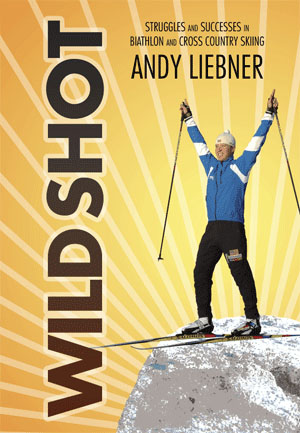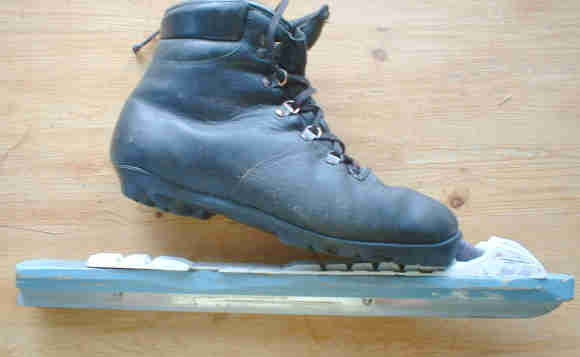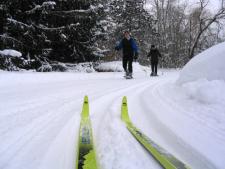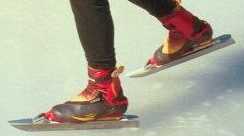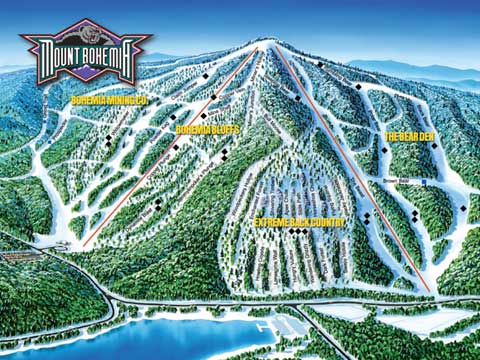THE LONELINESS OF LONG DISTANCE
I recently went up to the weekend of Vasa ski racing events. I noticed in media interviews with the male and female winners of the Marathon that they both mentioned being a bit lonely out there, being on their own for a long time.
Now, some racers might see a lot of humanity during the week and want nothing more than to get off by themselves when they train or race, or at least when they race. It’s just them and the clock — and that’s fine. It’s the essence of the max-performance interval-start event. No distractions.
Well, I personally work on my own and don’t get out much. I’d rather do something fun and interesting with engaging folks in my off-hours. And that’s what I want my skiing to be connected with, even in racing.
Now, if I did more of it, I could see a place for the pure intervals, especially in shorter events. But I don’t think that’s what I’d want a whole day’s skiing to consist of, even on a race day. I suppose for interval-start 10-15k events that many racers do go out and ski around before and after more than usual.
(I note that quite a few Vasa skiers wore armbands in memory of Brian Donnelly, a skier who died on the trail recently. He’d skied all the Vasas. He was an early inspiration for me. He was a top racer back when I was a teen. He and his pals showed me that XC skiing could be witty, fun, complex, sociable — that there was meat to it. I’m sure there’s a lot of meat to most sports. But Brian & Co showed me that for skiing. That’s what got me hooked.)
I notice the quietness in racing of all kinds. Even in a fairly big race and even in a pack, racing tends to be quiet. Chatting is for training, fun and friends. Racing is thinking and planning and conniving. Sure, once you’re comfy in a scene and if all is going as it should I’d think that racers would chat and shoot the breeze. When the dust settles after the starting jive folks can look around, see who’s there, and chat about what to do, maybe take turns pulling and such. But before you’re comfy you tend to be preoccupied and quieter than usual. (I mentioned this same syndrome for the Barry Roubaix dirt road bike race I did last spring — I was riding near the same dozen people for hours and didn’t really say Boo to any of them. We coulda all agreed to kick it back a notch and had a nice outing. Instead we were straining the whole time, and altering the outcome not a whit.)
But often things are quiet. If you haven’t messed up, soon after the start you’ll be where you’re going to finish. …How ’bout that. : ) I’ve always gotten a kick out of realities like that. When you’re just starting out and learning is when how things might turn out are an exciting mystery. After you’ve done a few races you might move up a place or two but that’s about it. You do moving up only when something screws up — like when you break a pole, or crash, and need to catch up again.
Racing just doesn’t have socializing as a priority. Occasionally it has entertainment — but that’s mostly with short-course events in town, like crits, sprints, cyclocross.
A NEW SOCIAL WAY TO RACE?
BUT! BUT! BUT! …I think there might be a way to have both racing and socializing if you wanted it. Maybe even a bit more variety. I really like how we try to do the Potto Raid. We have a true parade first half hour then we break the event up into several stages with regroupings at natural rest spots and overlooks. This trail can be dangerous so it’s good to stop a bit and catch our wind. This also gives a chance for folks who were outta sort in an earlier stage to have another chance to shine. It’s a thought!
Also, if there’s a really hilly section of a trail. Everyone could ski together to the start of that section then bust loose for 20 minutes then regroup afterward, seeing how everyone did. That could be a stage. Or if there’s a section with some technical downhills, people could see how well they could do there, then regroup: another stage. Different skills would get different chances to shine. Maybe there’d be a lake crossing and everyone could fan out and sprint for a km: another stage.
RANDO SKI
Randonneuring is big in bicycling but doesn’t seem yet to have a counterpart in skiing. Presently we go 100-110% in a race. You go flat out, give it your all (OK, maybe that’s 80-90% of your max, actually). We’re spent at the end. We strain our tendons. Heck, we might even get injured going so hard. It can take days to recover. It can make for sleepy, early evenings. This is fine. But. There might be another way.
What if you went, say, 5-10% easier? For one thing, you may not go much slower. As a result you might be able to go far longer. Kicking it back a notch may well take nearly all the harsh edge off of the effort. Do we really want our ski days to be short? A long ski race is over in a couple hours. What about doing a fun, adventurous ski challenge for 4-5 hours with stops for tasty snacks and great overlook views? It would still be a challenge to ski so vigorously.
What about picking a pace and having everyone in that group agree to stick to it? That’s the rando idea. What about the idea of everyone finishing together? You can all have a challenge, all get plenty of exercise, AND all ski together. Maybe the strongest would pull more, or help carry the gear of someone who starts faltering.
Especially if it’s a true adventure and there’s trail breaking involved. Several of the fittest skiers can take over the duties rotating at the front while the rear dozen can have a much easier time of it. Everyone gets what they need.
The goal might be to go farther than before, to explore a new trail, to keep a whole group together. It’s not racing, but it’s SOMETHING. …Something new and different?


